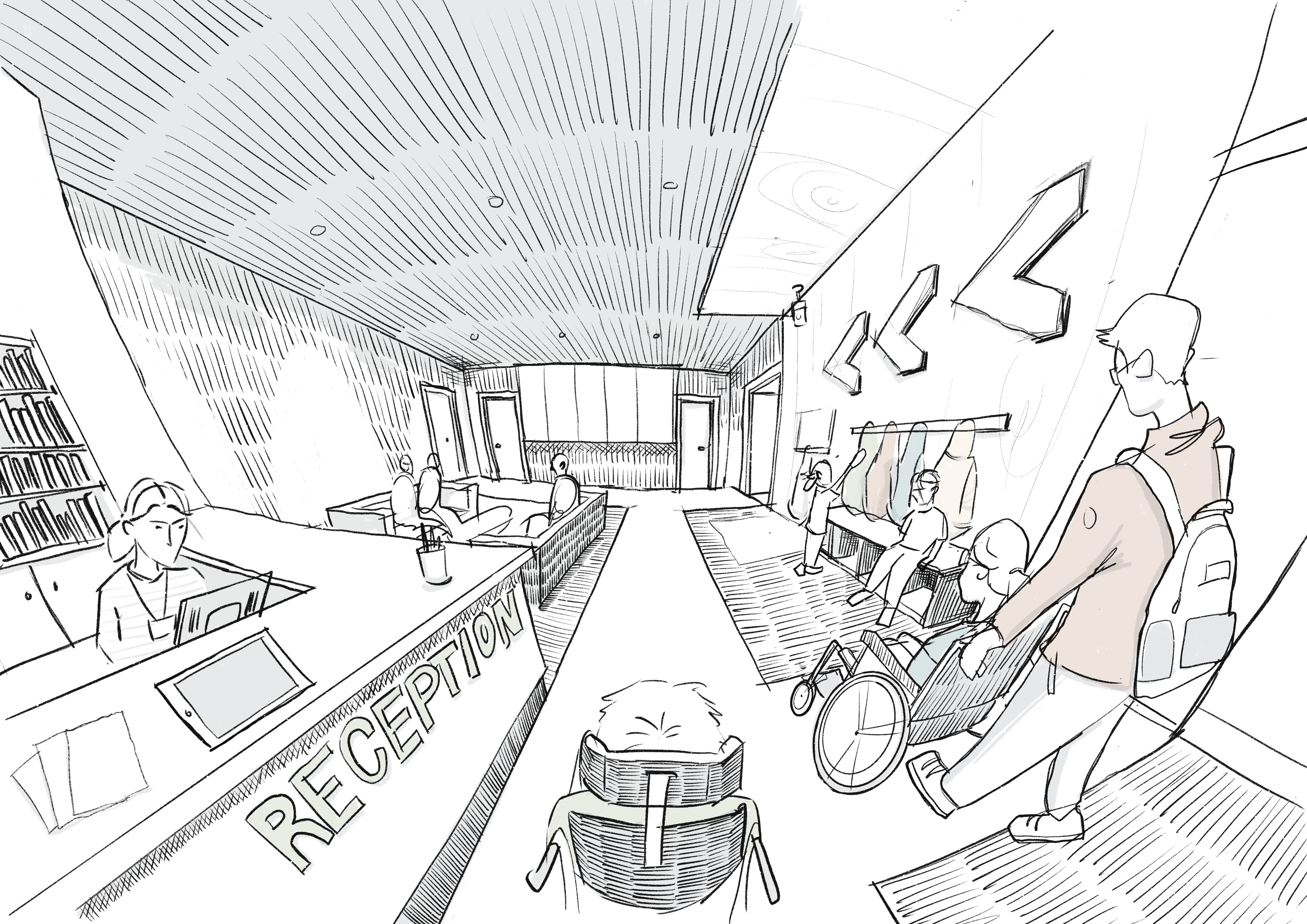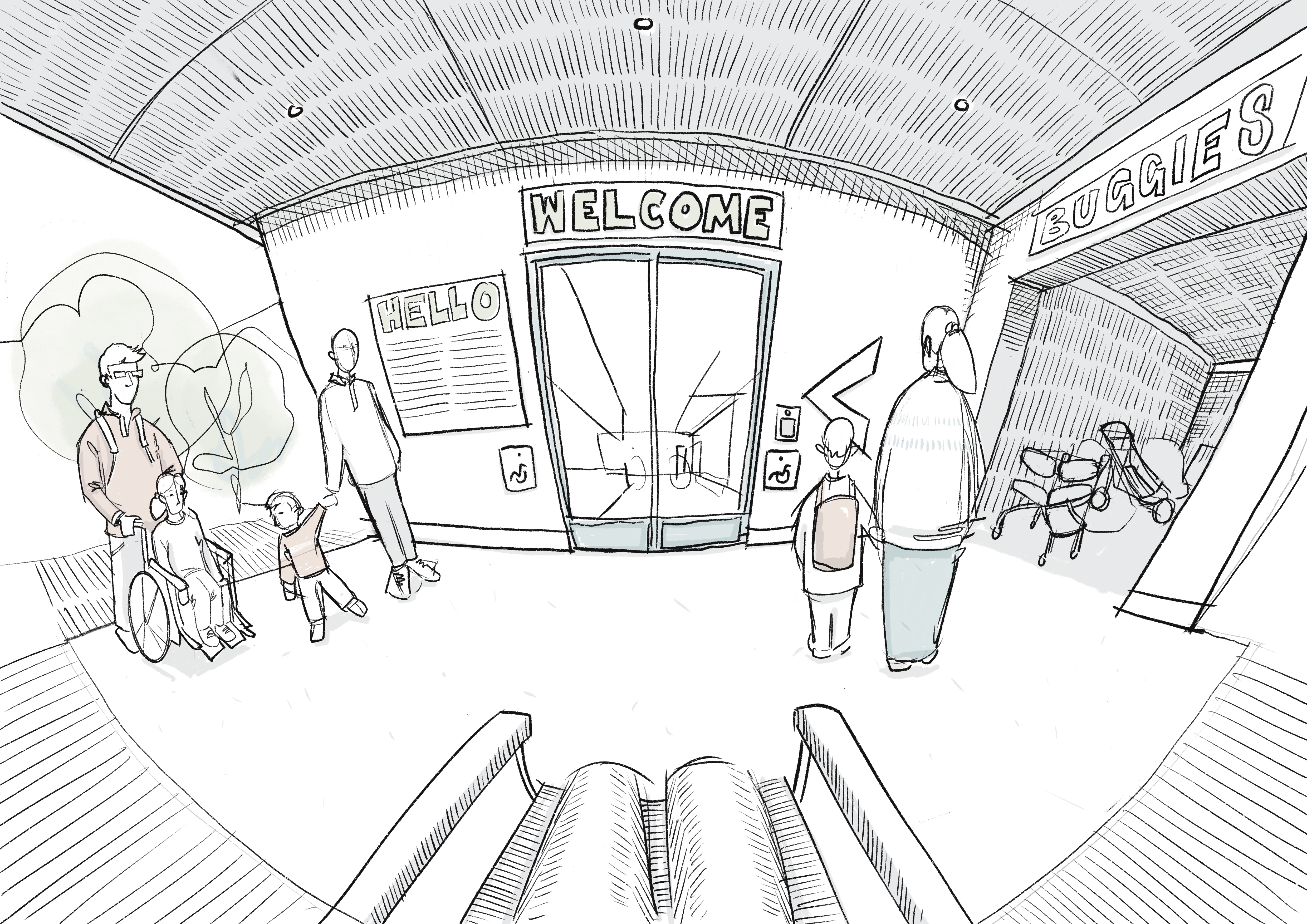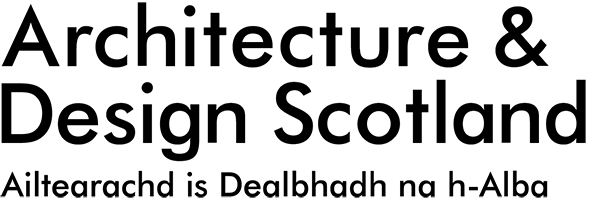Designing for inclusive and accessible learning environments
How design can help to create safe and supported spaces to meet the needs of all pupils

Introduction
Accessible design seeks to ensure spaces are user-friendly, especially for individuals with additional needs. Inclusive design considers the diverse needs of people more generally, so they will feel safe and supported in their environment. Together, inclusive and accessible architecture is about designing buildings and spaces to be usable by people of all abilities, ages, and backgrounds.
The principles of inclusive and accessible design apply to a range of public facilities, including Scotland's Learning Estate, healthcare buildings and civic spaces, though they may differ in their specific requirements.
This webpage focuses on the inclusive and accessible design of learning environments.
Our experience
Our experience and observations of inclusive and accessible design have developed from working with the Craighalbert Centre, the Scottish Centre for Children with Motor Impairments.
Their vision, which we helped bring into focus, was to create an inclusive, integrated nursery environment where children can learn and play in shared spaces, regardless of whether they have profound and multiple learning disabilities (PMLD) or more typical support needs. To develop this vision, we carried out a feasibility study looking at the spatial requirements for children with varying Additional Supported Needs (ASN), helping to translate the centre's inclusive ethos into practical design solutions.
We worked in partnership with designers, thinkers and practitioners who have experience and knowledge of inclusive and accessible planning for Scotland's Learning Estate. These include Malcolm Fraser of Fraser/Livingstone Architects leading the design team, and Thea McMillan advising on inclusive and accessible approaches. Together we have gathered lessons which can be used as a starting point to develop transferable considerations across any project.
To further inform our work, we consulted Education Scotland, and the members of their National Complex Needs Network (NCNN) to map out common themes and barriers. Members of this network support learners with the most complex needs in our education system. They have valuable experience of the adaptations needed to meet the needs of their pupils.
Find out more below.
What does inclusive and accessible design mean for Scotland's Learning Estate?
A successful learning environment is one which enables all pupils, regardless of their needs, to fully participate, achieve, be supported and feel part of the community.
In Scotland, education is a rights-based, learner-centred system which must be inclusive for everyone, including those who require additional support across the totality of the curriculum. The four pillars which underpin inclusion for children and young people are to be present, to experience meaningful participation, to achieve and to be supported. You can read more about this on Education Scotland's website here.
A significant factor in creating truly inclusive spaces is the need for accessible building design, and safe, inclusive environments. This involves several key considerations:
- Meaningful stakeholder engagement. We must actively involve all stakeholders, particularly children and young people, throughout the design and build process.
- Safe and low-maintenance environments. The building design should be inherently safe, minimising the need for constant support and ongoing risk assessments.
- Empowering and responsive design. The design itself needs to:
- ensure everyone can access what they need, when they need it, as independently as possible, in order to empower the children and young people to reach their full potential
- consider a wide range of sensory needs, including elements like lighting, materials, aesthetics, and the provision of breakout and safe spaces
- feature inbuilt flexibility to allow for adaptations in response to evolving IT requirements, dynamic risk assessments, and ever-changing needs
Read our 'Key Principles for Inclusive and Accessible Design' here.
Who is this page for?
To create more accessible and inclusive learning environments across Scotland, we need to work together. The commissioners of educational buildings (usually local authorities), architects and designers, and those who will experience the spaces first hand – the children, staff, and wider community – all have a part to play.
We are sharing the lessons, observations, feedback and barriers from those with experience of working with children and young people with additional needs, and those designing for them. Below are some ways in which different groups can use the information gathered on this page.
- For architects and designers: the challenge is to combine experiential needs with architecture and technical aspects of design. We hope this resource help inspires and open up conversations about how spaces can be designed to support inclusivity and accessibility. As with all good design, it is important to start by asking the right questions and speaking to the right people.
- For users and commissioners of the learning estate: the best way to understand and design inclusive and accessible spaces is to see them through the eyes of those who will use them. We hope this resource enables both the commissioners and the users of spaces to be open and honest about the needs of their community of young people.

Key principles
We have pulled together seven key principles which outline important steps to consider when building or adapting your learning environment to be inclusive and accessible.
The resource also includes a review of the barriers to achieving accessible and inclusive spaces.
Spatial ideas
This resource explores innovative ideas for shared nursery spaces which ensures that all children, regardless of ability, can learn and play together.
Explore animated design concepts, user experience insights, and a pattern language for truly accessible spaces.
Additional information
This resource outlines principles to consider, rather than guidance. When we refer to inclusive and accessible approaches this is very much in reference to our learning from the Craighalbert project and an additional supported needs (ASN) basis. There are many other factors and users to consider and collaborate with in creating fully inclusive spaces.
We hope to further expand these resources for the learning estate, and we are eager to develop further projects and case studies to deliver this form of support.
To read more about our work on Scotland's Learning Estate click here.
